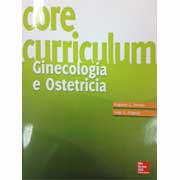117. DNA ploidy supplies complementary prognostic information in ovarian tumors
International Journal of Gynaecological Cancer. Vol. 5 (1), pag. 38. 1995
Fifth Biennal Meeting of the International Gynecologic Cancer Society. Philadelphia
( Pennsylvania - USA) 4-8 Settembre 1995
( in coll. I. Sassi, F. Mangili, A. Ferrari et al. )
Summary: The Quantitative study of DNA ploidy had shown that variations inDNA content frequently occur in various different human tumors. DNA diploidy has been confirmed as an indipendent prognostic factor in ovarian cancer. Fifty-four patients with epithelial malignances of the ovary treated at S. Raffaele Hospital - University of Milano, from 1986 to 1991, had paraffin-embedded tissue available for review. Of the54 patients, 49 had adequate material to provide 40 m sections that were evaluated with flow cytometry to determinate DNA content. In 19 of those cases we could determine DNA ploidy by flow cytometry both in fresh and in formaline-fixed paraffin-embedded tissues. Cases were classified according to their histologic types as presented by the WHO and reiterated by Scully in 1977. Staging of carcinomas was done according to FIGO criteria. Each cases studied was classified as diploid if only one peak was present in the histogram. The term diploid indicated a DI=1. Surgical results were related to survival and DNA ploidy. We related histological grading and ploidy evaluation to 36 months survival rate after primary surgery. Statistical data were analyzed by Pearson’s Chisquare test and by Fisher’s exact test. Statistical significance was defined at p<0.05 .Ovarian cancer patients were between 23 and 80 yrs old, with an average age of 57 yrs; the majority of tumors (77.6%) were at stage III and IV. The prevalent histological type was serous carcinoma (57.1%). The endometrioid carcinoma was diagnosed in 10 patients (20.4%). We observed 61.2% of tumors with aneuploid DNA. The evaluation of 36 months survival rate shows that of the 19 patients with diploid DNA content, 13 are alive (68.4%), while of the 30 patients with aneuploid DNA, only 8 are alive 7(26.%)(p 0.05). We studied the correlation between 36 months survival rate and histological grade. Grading was not available in 5 patients. eight of 10 patients with low grade tumor (G1) are still alive (80%); 4 of 6 patients with intermediate grade (G2) survived (66.7%); and 8 of 28 cases with G3 tumor showed not aneuploid DNA (21.4%) (p<0.05). Six of 10 patients with G1 tumor had aploid DNA content (60%); 4 of 6 patients with G2 neoplasia had euploid DNA content (66.7%); 6 of 28 cases with G3 tumor showed not aneuploid DNA (21.4%) (p<0.05). In patients with early stage disease, 6 of 7 cases with diploid DNA content were alive, comperad with 3 of 4 cases with aneuploid DNA content ( Fisher’s exact test not significant ). In patients with advanced stage disease, 7 of 12 cases (58.3%) with diploid DNA content were alive, compared with 5 of 26 cases (19.2%) with aneuploid DNA content (p<0.05). In patients with advanced stage disease, 36 months survival rate was related with size of RT. Eleven of 13 cases with RT<2 cm were alive (84.6%) while only 1 of 25 cases (4%) with RT >2 cm survived (p<0.01). None of 10 patients with stage IV ovarian tumor, was alive 36 months after surgery. Ploidy was not related with the size of residual tumor after primary surgery. Seven of 13 (53.8%) patients with RT<2 had diploid DNA content, compared to 5 of 25 cases (20%) with RT>2 who had diploid DNA content (p=0.07). We compared low grade (G1-G2)with high grade tumors (G3): 12 of 16 patients with G1-G2 ovarian neoplasia were alive after 36 monrhs (75%); 8 of 20 patients with G3 disease survived after 36 months (28.6%) (p<0.01). low grade ovarian tumors showed diploid DNA content in 10 over 16 patients (62.5%), while 6 over 28 cases (21.4%) with high grade disease had not aneuploid DNA (p<0,05). Our study confirm the importance of recognized prognostic factors such as surgical stage of disease, grading and residual tumor after primary surgery in advanced stage ovarian tumors. We agree with investigators who suggest that the results of flow cytometry have to be use in conjunction with others prognosticators, such as stage, RT, grade or historical type, to tailor treatment protocols based on risk assessment.
